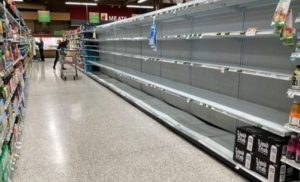Sevens Report Analysts Quoted in Market Watch on October 17th, 2022
Oil futures settle slightly lower, extending last week’s sharp loss
“The backdrop of sticky high inflation resulting in increasingly more hawkish Fed policy expectations for the foreseeable future and the subsequent rise in recession fears will likely keep a lid on WTI in the low to mid $90s,” analysts at Sevens Report Research wrote in Monday’s newsletter. Click here to read the full article.





